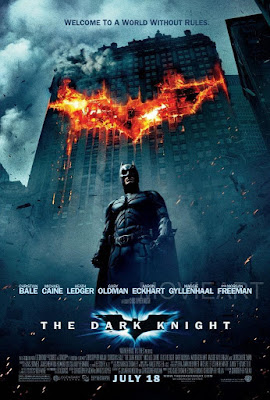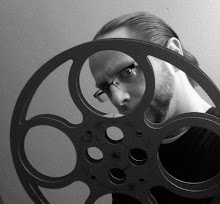This past weekend, the 11th film from writer and director Christopher Nolan, TENET, was finally revealed to the world. Its release immediately sparked discussions over the career of the British-American filmmaker, which leads us to Reel Speak’s first Ranking of the Films of Christopher Nolan.
After over 20 years, Nolan has become one of those rare directors whose movies can be considered events; having pushed the boundaries of technology and traditional storytelling. He has told his stories through non-linear methods, messed with the passage of time, and redefined genres. Since 1998 his efforts have earned almost $5 billion at the worldwide box office, with 34 Oscar nominations and ten wins. His visons are fascinating and divisive, with one foot set in the history of cinema with the other stepping forward where no one else has. His range of success has varied, but he has yet to make a film that is unwatchable or deserving of the trash heap. Every film here is worthwhile, but some are just better than others.
So let’s watch closely…
11. TENET (2020)
John David Washington (son of Denzel), plays a CIA agent using time manipulation to prevent worldwide decimation. Ambitious to a fault, TENET rewinds and fast-forwards time enough times to give us multiple character timelines; enough that will have fans drawing maps and diagrams for years trying to sort it all out. Several re-watches may improve it, but the first impression, which is always important, is as exhausting as it is frustrating. A technical marvel that suffers from thin characters and half-explained time-travel concepts.
10. INSOMNIA (2002)
Al Pacino plays a sleep-deprived detective trying to solve a murder in a sleepy Alaska town in perpetual daylight. As the only remake Nolan has done and the only film where he does not have a screenwriting credit, INSOMNIA isn’t quite one of his films…and it shows with its straightforward, nearly dull presentation. The film was Nolan’s first with Warner Bros., cementing a relationship that continues to this day, and it drew a fantastic, dramatic performance from the late great Robin Williams…but it’s still a snoozer.
9. FOLLOWING (1998)
Nolan’s feature debut, in which an un-named young man follows strangers around the streets of London to find inspiration for his novel. Simple, short (less than 70 minutes), and right to the point, FOLLOWING has become all but obscure as Nolan has moved on to bigger and better things, but the film shows his early steps on the way to those big ones.
8. INTERSTELLAR (2014)
Matthew McConaughey and Anne Hathaway lead a team of astronauts into deep space to find a new suitable home-planet for mankind. Another technical wonder that plays with the passage of time (one hour for a character can be a decade for another), INTERSTELLAR was the film where Nolan swung for the fences in generating a Spielberg-level emotional wallop. Known mostly as a technical master than a tear-jerker, he didn’t quite get there…and that leaves the film feeling a bit empty. But the merits are many; It’s a space-odyssey on a massive scale that Kubrick would have loved, and one of the few Earth-is-doomed movies that offers hope.
7. THE DARK KNIGHT RISES (2012)
Nolan’s grand finale for his DARK KNIGHT TRILOGY of Batman films. Despite a sagging mid-section and a little bit of bloat, RISES works well on a larger scale than his previous two films, and the subtext of class distinction…the Haves vs. the Have-nots, resonates into today’s world. Home to some spectacular action sequences and thrilling performances by Bat-newcomers Tom Hardy (as Bane), and Anne Hathaway (Catwoman), it ends the trilogy on a high note with many rousing scenes and an emotional final sequence. Nolan’s highest grossing film with over $1 billion at the worldwide box office.
6. MEMENTO (2000)
Nolan’s second film and his breakout. Guy Pearce tracks his wife’s killer while battling short-term memory loss, an element that allowed Nolan to tell his story in a unique way; a timeline that is shown chronologically, and another shown in reverse order…which simulates for the audience the mental stage of the protagonist…who loses his memory every 15 minutes. A challenging film to get through (it gives this Blogger a headache), MEMENTO has been praised for having one of the most realistic and accurate depictions of amnesia.
5. DUNKIRK (2017)
Nolan’s Oscar-nominated take on the famed WWII evacuation of thousands of Allied soldiers which was aided by civilians. It is told over three different timelines operating on different clocks that eventually converge; on land, by sea, and by air. The desperation of the stranded troops can be felt, and Nolan’s commitment to 70mm photography and practical effects makes DUNKIRK a standout in today’s cinema. The varying timelines may be a challenge to follow, but the emotional ending makes it all worth it.
4. BATMAN BEGINS (2005)
Prior to 2005, Batman on film was a joke; having four hokey movies in the late 80’s and early 90’s that ranged from good to terrible. That all changed when Nolan stripped down the caped crusader to his core values, and brought us the first in a new wave of grounded superhero films; showing that masks and capes can function in the real world. Told through a unique, non-linear perspective, it stands out among the large crowd of origin tales in the genre. Christian Bale became an overnight star, and the supporting cast of Michael Caine, Liam Neeson, Katie Holmes, Gary Oldman, Cillian Murphy, Tom Wilkinson, Rutger Hauer, Ken Watanabe, and Morgan Freeman are perfect. Marvel’s X-MEN may have regenerated the superhero film for the next 20 years, but BATMAN BEGINS showed how great they can really be.
3. INCEPTION (2010)
Leonardo DiCaprio plays Cobb, the leader of an ensemble cast of operatives who invade the dreams of others to extract information…or to plant ideas. A heist film in reverse, INCEPTION literally works on many levels, with the operatives going into dreams within dreams, where time works differently on each floor. Its far-out concepts are grounded in Cobb’s get-Dorothy-home sub-plot, and the dazzling action sequences brought to life by way of old-school camera tricks. Nominated for eight Oscars and winning four, it is one of Nolan’s most successful films.
2. THE DARK KNIGHT (2008)
Nolan’s magnificent follow-up to BATMAN BEGINS which is often considered to be one of the best superhero films of all time. Christian Bale reprises Bruce Wayne/Batman, who goes up against his classic rival, the Joker…as famously played by Heath Ledger. Firmly grounded in the real world of cops and robbers, it often feels like TV’s LAW AND ORDER with capes and masks, but that does not detract from its punch. Layered with deep dives into the psyche of superheroes and super-villains, DARK KNIGHT will have us questioning who the real bad guys are…topped off with an ending that sent audiences staggering out of the theatre. Ledger rightfully took home a posthumous Oscar for his performance and became an instant icon, while the film elevated the superhero genre into a legit class of cinema even in the most stuffy critical circles. How good is it really? After 12 years no film based on a DC Comics character has come close to it.
1. THE PRESTIGE (2006)

Christian Bale and Hugh Jackman play 19th century magicians at war with each other. The film right away tells us that every magic trick has three parts; the pledge (something ordinary), the turn (something magical), and the prestige (bringing it back). Nolan takes that concept and applies it to the entire film; the movie itself is a magic trick using those three working parts. Coupled with a non-linear style which eventually catches up with itself, the film tells the audience to watch closely…a bold challenge that not many filmmakers would take. Where most Nolan films tend to put the characters on the backburner, THE PRESTIGE keeps the personal inner-demons of our two magicians at the front, and at times it’s hard to know who to root for. Another ensemble cast of Michael Caine, Scarlett Johansson, Rebecca Hall, Andy Serkis, and the late great David Bowie as Nikola Tesla (!) are assembled and put to great use. Our two magicians reflect Nolan’s personality; one a showman and one a craftsman…making THE PRESTIGE his most personal film. One that is fascinating to watch closely.
REEL SPEAK'S RANKING OF CHRISTOPHER NOLAN
- THE PRESTIGE
- THE DARK KNIGHT
- INCEPTION
- BATMAN BEGINS
- DUNKIRK
- MEMENTO
- THE DARK KNIGHT RISES
- INTERSTELLAR
- FOLLOWING
- INSOMNIA
- TENET
*
Thanks to Jon Gumble, friend of Reel Speak, for suggesting this topic.





























